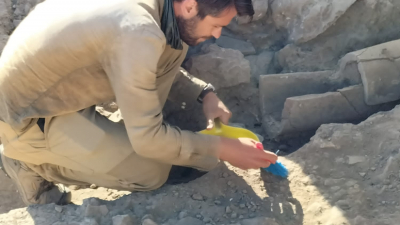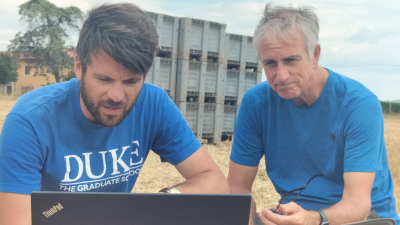Antonio LoPiano: Vulci 3000 Archaeological Project

Thanks to generous funding from the department this summer, I was able to continue my participation in the Vulci 3000 Archaeological Project as a Trench Supervisor, under the supervision of Prof. Maurizio Forte. It always a thrill to be a part of such an important project and it wouldn’t be possible without the support of the department and our generous donors. Gaining excavation experience is always critical at this stage of my career and the excavations at Vulci are constantly turning up exciting new discoveries. These insights into the development of this Etruscan and Roman city that have important implications for our understanding of both cultures.
Particularly rich is the evidence it is providing on the critical, yet poorly understood, period of transition in the wake of the Rome’s rise to dominance in the 3rd century BCE. The excavations this season discovered a phase of reinvestment in the public waterworks in this period, a discovery that runs counter to the traditional narrative of decline and crisis. Other evidence of urban renewal has also come to light. In the forum area several large public structures have been found through the use of advanced remote sensing technology. The more we investigate, the more it seems that Vulci was not the backwater it has been supposed to be in the Roman period, but instead was a thriving city that incorporated new cultural elements into the fabric of its long-standing urban landscape. Towards the end of the season, the project uncovered a phase of the city dating back to the Archaic period. I guess I’ll just have to return for another season to see what new revelations await!
The project also afforded me ample opportunity to employ cutting edge technology in the field. At Vulci we have employed ground penetrating radar, magnetometry, and electrical resistivity, but this summer I was able to get a remote sensing project, quite literally, off the ground at the nearby site of Doganella. For the pilto survey, we employed a new unmanned early vehicle (UAV) platform with a state of the art 5 band multispectral imaging sensor that has allowed us to inspect the effects of subterranean archaeological features on the topography and vegetation at the surface. I plan on using the data in my dissertation and as the basis of the new survey project that will complement the ongoing project at Vulci. Thanks to the generosity of the department, Duke university, and our donors, I have gained invaluable experience essential to the successful completion of my dissertation and my career!






